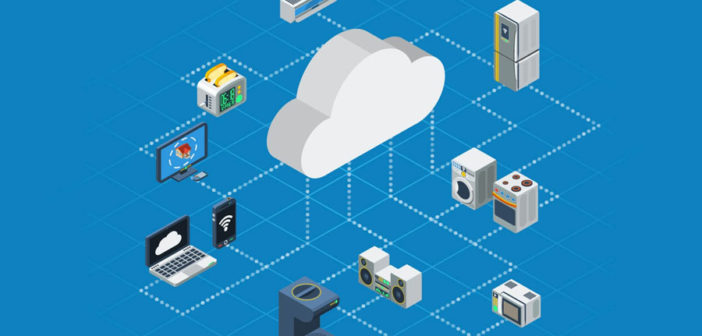How the spread of computerized gizmos is shifting business models big and small.
Despite the bland physicality of the term “the internet of things,” much of the transformational potential of connecting devices to the cloud comes from blurring the lines around traditional business models and abstracting what it means to make and sell a product.
“The internet of things is not really about things” but about services, says Macario Namie, head of internet of things strategy at Cisco. “The impact is really in changing to service-based business models.” Namie was one of nearly a dozen industry experts who spoke about how enhanced interconnectivity is impacting the business world when Stanford Graduate School of Business hosted the Internet of Things in Global Value Chains Executive Conference this spring.
For example, Namie says, Konica Minolta no longer sells office copy machines — it provides a connected “digital hub” and businesses pay for the scanning, copying, and digitization services it provides. Selling these “outcomes” is a revolutionary change for a company long steeped in a one-time revenue model of selling physical products. “The impact on business models is profound when you have this kind of real-time connection to the thing itself.”
What’s more, Namie says, these business-model transformations have a way of trickling down and spreading across industries. If GM sells you a Wi-Fi–enabled car, that means AT&T, looking for ways to expand beyond phones, can add a vehicle to your data plan. Meanwhile, GM is now in the business of selling the data it collects from your car, perhaps to an insurance company that offers a pay-as-you-drive insurance model.
“You would never think of a car company of being in the business of monetizing data, but that’s absolutely where they’re trying to go,” Namie says. “And their competition is not just Ford or Nissan. They’re also thinking, Who else is monetizing data? Who else wants access to this information that I have? How do I use that as a strategic point within this entire automotive ecosystem?”
That impact on business models of all sorts might be the most transformative aspect of the internet of things, says Haim Mendelson, co-director of the Value Chain Innovation Initiative and professor of operations, information, and technology at Stanford GSB. “How can we create company value through the use of data and things?” Mendelson asks. “One is enhancing existing business models, one is creating new business models, and one is providing the platform that facilitates or sometimes enables the enhancement and creation of those business models.”
Of course, these opportunities don’t come without significant risks. If people think online data security is difficult, it’s nothing compared to the potential vulnerabilities that come from millions or even billions of connected devices, says Hau Lee, co-director of the Value Chain Innovation Initiative and a professor of operations, information, and technology at Stanford GSB. “Some of them have an IQ of 1,000, but some of them have an IQ of 10,” Lee says. “There are many small devices that are stupid and that could be an easy target for hackers.”
“The scope and scale of security is extraordinarily broad,” agrees Cisco’s Namie.
Every refrigerator with an IP address and a default password that people are unlikely to change becomes a target for spreading viruses, adds Amip Shah, who leads research and development for the internet of things at Hewlett Packard Labs. “They’re not just low-hanging fruit,” Shah says, “they’re low-hanging watermelons.”
What’s more, hacking a laptop generally affects only data. The internet of things extends the vulnerabilities into the high-stakes physical world of objects and actions, from sabotaging factory robots to taking control of a car.
But if the risks are large, so are the opportunities to transform entire industries. Arable Labs, a farming data-analytics startup, has developed what Head of Special Projects Jess Bollinger calls a “souped-up weather station” that could help the company reduce risk throughout the agricultural food chain. Placed among crops in the field, the device tracks dozens of data streams on things like rain and nutrient levels, canopy cover, and plant health. The insights help growers not only to optimize the best time to prune, irrigate, and harvest, Bollinger says, but also to predict crop yields and quality, a critical component of coordinating with retailers who want foreknowledge of what’s going to be ripe and when so they can adjust their marketing efforts accordingly.
Overall, Mendelson says, the internet of things is perched in the same position that the internet found itself in the early 1990s, when he began teaching about it. He recounts how in 1993 Steve Jobs came to Stanford GSB to speak to students.
“One of the students raised his hand and asked, ‘Steve, what is your forecast of the future size of the internet?’” Mendelson recalls. “Jobs was standing there thinking, thinking, and a smile spread across his face, and he said, ‘It’s going to be big, man!’ So that’s the way I think about the internet of things.”
–
This article first appeared in www.gsb.stanford.edu
Seeking to build and grow your brand using the force of consumer insight, strategic foresight, creative disruption and technology prowess? Talk to us at +9714 3867728 or mail: info@groupisd.com or visit www.groupisd.com



